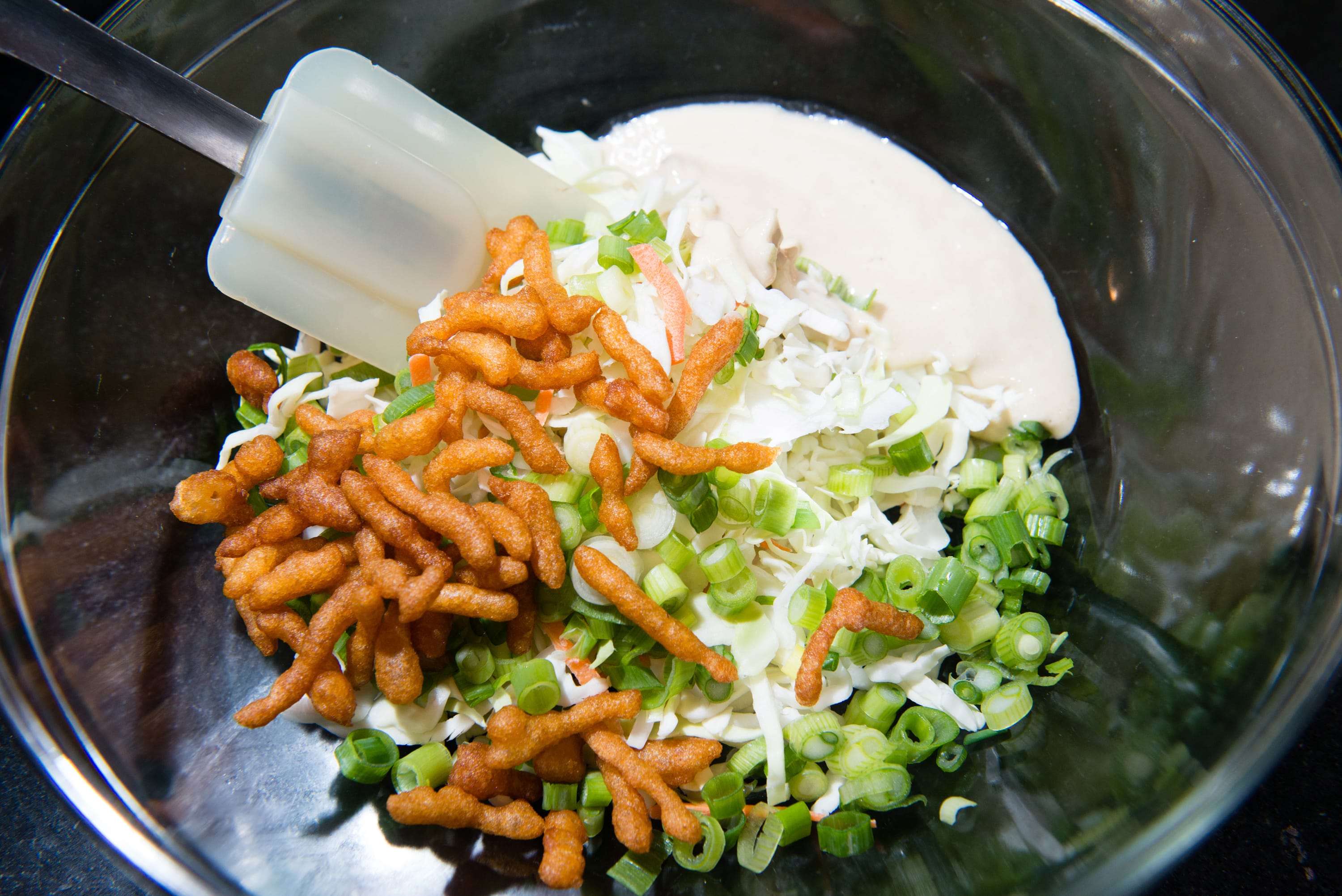To make one seafood okonomiyaki, add to 1 serving of the pancake-cabbage mixture: 3 ounces of shrimp or sea scallops, cut into 1/2-inch pieces, and 2 teaspoons chopped pickled ginger. Cook as directed above. Serve hot, topped with 2 teaspoons okonomi sauce, 2 teaspoons of Kewpie mayonnaise and bonito flakes (to taste).
To make one smoked salmon okonomiyaki pancake, cook the pancake as directed above, covering the finished pancake with 3 ounces of sliced smoked salmon then topping it with 2 teaspoons of wasabi mayonnaise, 2 tablespoons of slivered red onion, 1 tablespoon of peeled, seeded cucumber cut into 1/4-inch cubes and aonori or nori fumi furikake (to taste).
To make one margherita okonomiyaki pancake, preheat the broiler. Thinly slice 3 basil leaves and add to the pancake-cabbage mixture. Cook as directed above, making sure to use an ovenproof skillet. Top with 3 ounces of sliced fresh mozzarella, then broil for 1 minute to melt the cheese. Transfer the pancake to a plate. Serve hot, garnished with 1 teaspoon’s worth of tomato paste from a tube, squeezed in a few squiggles, and 3 additional basil leaves, thinly sliced.
To make one egg-and-baconomiyaki, fry two eggs (sunny-side up or over-easy or poached) in a small nonstick skillet; keep warm. Pile the pancake-cabbage mixture into a 10-inch round in separate 12-inch skillet as directed above. Lay 2 strips of bacon on top, using them to cover as much of the surface as possible. Once the bottom is nicely browned, flip the pancake over. Cook for 3 to 4 minutes, until the bacon is nicely browned. Serve hot, topped with the fried eggs, nori fumi furikake and chopped scallions.



